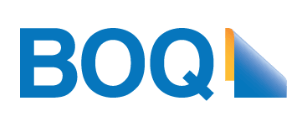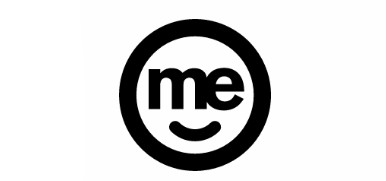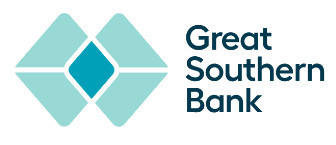Disclosure: Privacy Australia is community-supported. We may earn a commission when you buy a VPN through one of our links. Learn more.
Best High-Interest Savings Accounts Australia

Are you an Aussie saver trying to find ways to grow your savings or earn more money on top of your deposit? One solution that might suit your requirements is a high-interest savings account in Australia.
The best of these accounts offer competitive interest rates that are ongoing in many cases, and many offer enticing features and extras that you can use to meet your savings goals.
If you haven’t found the right account, the great news is that many are available. Which options are the best high-interest savings accounts Australia-based savers can use?
Keep reading to find out as our Privacy Australia experts look at the top savings accounts, their features, advantages, and disadvantages so you can select one.
Table of Contents:
- What Is a High-Interest Savings Account
- How Do High-Interest Savings Accounts Work
- What Are the Features of High-Interest Savings Accounts
- Pros and Cons
- Reviews
- 1. ING Savings Maximiser Savings Account
- 2. Move Bank Growth Saver Account
- 3. Bank of Queensland Future Saver Account
- 4. Rabobank High-Interest Savings Account
- 5. ME Bank HomeME Savings Account
- 6. Great Southern Bank Youth eSaver Account
- 7. Teachers Mutual Bank Savings Account
- The Verdict
- FAQs
What Is a High-Interest Savings Account? 🤔️
Financial institutions offer High-interest savings accounts that provide savers with greater interest rates when compared with a transaction account or standard savings accounts. These accounts are the optimum way to grow your savings since the interest rate on your deposits is high and will help you earn more money.
Many high-interest savings accounts require a minimum monthly deposit or restrict your number of withdrawals. They are also available online and typically do not have a debit or credit card, meaning you are less likely to spend the money you save. Since a regular savings account will not offer such high interest rates, these conditions do not apply to them.
55% of Aussies have savings in high-interest savings accounts and are earning significant sums to grow their funds.
How Do High-Interest Savings Accounts Work? ➡️
By offering higher interest rates on the amount you save, a high-interest savings account will help your deposit to increase in value over time. It works by paying you interest that the bank will calculate by focusing on market conditions, the length of the investment and the account type.
Now, banks can offer high interest rates to savers by lending to other borrowers at a higher interest rate. As other borrowers pay interest on the sums they borrow, your financial institution can afford to pay you competitive interest when you meet specific conditions.
You can use a specific formula to work out the simple interest you will earn on your savings. The formula is principal amount x the interest rate x period. To consider how this works, let’s look at an example. If you have savings of $100,000, the interest rate is 4%, and your period is one year, you should multiply $100,000 by 0.04 and multiply this by one. In this case, the interest you will earn is $4,000.
What Are the Features of High-Interest Savings Accounts? 🔎️
The features of accounts that offer high interest on savings are wide-ranging. Here are a few features you should look for when selecting this account type.
- Competitive interest rates — Savings accounts should offer higher and more favourable interest rates than those offered by other accounts. Although these rates vary, most offer rates that can help your deposit grow.
- Inexpensive or no account-keeping fees — With the savings account you open in Australia that offers high interest, you can expect inexpensive or no account-keeping fees. This feature translates to lower charges, making it simpler for you to save your money. If there are some, the fees will be mentioned in the terms and conditions of your account.
- Introductory period — Many savings accounts offer an introductory period that offers a specific rate when you initially sign up. After the introductory period, you will see that the rate reverts to the standard rate.
- Bonus interest — You also have an additional incentive to keep your money in a high-interest savings account in Australia. Many of these accounts offer additional interest rates, referred to as bonus interest, when you meet specific conditions. For example, if you make deposits regularly or avoid withdrawals, some financial institutions will reward this.
- Online banking — Should you need to manage your savings account through online services, one feature that will help is online banking. This service lets you check your transaction history and balance or deposit additional funds online. These services also enable you to check electronic statements, set up account alerts and make withdrawals.
Best High-Interest Savings Account Australia: Pros and Cons ⚖️
Many advantages and disadvantages apply to high-interest savings accounts in Australia, and knowing what to look for is important. Here are the pros and cons before opening a savings account in Australia that provides high interest rates.
Pros ✅️
- Faster savings growth — With a higher interest rate, you will have no problems growing your savings with this type of account. This advantage means you can achieve your savings goals more quickly than with a standard bank account.
- Online banking facilitates money management — You can use online banking services to monitor your account, which gives you deeper insights and visibility, as well as easier money management.
- Financial Claims Scheme applies — The funds in your many savings accounts that offer high interest rates are often protected by the Financial Claims Scheme. This advantage means that deposits of $250,000 remain safe even if the bank fails.
- Rules for regular deposits help you grow your money — Since these accounts expect you to make regular monthly deposits, they encourage you to grow your money and help you save.
Cons ❌️
- Fluctuation of interest affects your earnings — Since interest rates do not stay the same, the rate at which you earn interest can fluctuate. Due to this disadvantage, your savings may not grow at a constant rate, and you may notice that some periods of low interest rates lead to slower rates of saving.
- Minimum deposit amounts may apply — For some bank accounts with high interest rates, you may have to make a minimum deposit amount each month to qualify for bonus rates. You may only receive the standard interest rate if you cannot make a minimum deposit.
- Fees may apply to your linked transaction account — If your savings account with high-interest rates expects you to open a linked transaction account, this latter account may require you to pay fees in some circumstances. It is worth checking the conditions of the linked account before you sign up.
Best High-Interest Savings Account Australia: Reviews 🔝️
With the advantages and disadvantages of these accounts covered, let’s now explore the best options available to help you make an informed decision when choosing one. Here are the best high-interest savings accounts in Australia.
1. ING Savings Maximiser Savings Account
The ING Savings Maximiser is a high-interest account for savings available in Australia. It gives you a 5.5% variable interest rate of up to $100,000. These interest rates apply every month. You will need to consider and meet few eligibility criteria if you want to use this account.
For example, you can receive ING’s highest interest rate by depositing $1,000 monthly into the account.

The funds cannot be from a Living Super or Orange One account. You also need to ensure your savings amount exceeds the previous month’s value and that you can make five eligible payments or transactions with your card.
Some of the great perks you can benefit from with the ING Savings Maximiser include that no fees are expected from you. This account also offers an Everyday Round Up feature, meaning eligible card purchases can be rounded up to the nearest $1 or $5. Your rounded portion from the Orange Everyday bank account automatically moves to your savings account.
For example, you might spend $3.75 on an item with your card. The $1.25 will be transferred to your savings account with the Everyday Round Up feature activated.
It’s also possible to get access to your ING Savings Maximiser account via your mobile device. This feature means you can easily transfer money online between your accounts.
Pros
- The ING Savings Maximiser account does not demand account-keeping fees.
- This account does not charge ATM fees within Australia.
Cons
- You can only receive the bonus rate if your balance is below $100,000.
2. Move Bank Growth Saver Account
With Move Bank Growth Saver, you can grow your savings and even receive a bonus interest rate when you make deposits of $200 and do not make any withdrawals each month. This bonus interest only applies to a maximum balance of $25,000. If you cannot deposit $200 per month or withdraw money from your account, you will only receive the base interest rate.

Zero monthly fees apply if you have a high-interest savings account with Move Bank Growth Saver, and the interest rate you will receive is 5.5%, which can fluctuate depending on market conditions. In addition to these benefits, several features are available.
For instance, you can access your account online banking services on a desktop. This service is also available as a mobile application, so you can view your savings account online, your transactions and your balance when on the move. On the Move Bank Growth Saver webpage, you can access a savings calculator to make it easier to view how your money will grow in line with specific interest rates.
Pros
- Move Bank Growth Saver expects no monthly fees.
- Their many tools help you view and predict how your savings will grow.
Cons
- You cannot receive the bonus rate if you make withdrawals.
3. Bank of Queensland Future Saver Account
The eligibility criteria for the Future Saver account with the Bank of Queensland state that you must deposit at least $1,000 from external bank accounts and make five transactions.
The money you deposit cannot be in cash or cheque form. By meeting these eligibility criteria, you will receive the bonus interest rate.

There is no monthly account-keeping fee with the Future Saver account. There are also no transaction fees within Australia, plus mobile banking is possible. In fact, some of the features of the mobile banking application include an in-app chat option, bill-tracking tools, alerts and personalised insights on how you spend your income.
The Round Up feature is also available to Future Saver account holders. If you activate this feature, it means that with each debit card transaction, the financial institution will round up the cost of your purchase to the nearest dollar and add the excess into your account.
Some additional eligibility criteria apply if you want to establish a Future Saver account. You must be 14 or over, have a residential address within Australia, and possess an up-to-date smartphone with recent software.
Pros
- No account-keeping fees apply to the Future Saver account.
- The Round Up feature helps you make the most of your spending and savings.
Cons
- You must deposit at least $1,000 each month to receive the bonus interest rate.
4. Rabobank High-Interest Savings Account
You receive plenty of perks when you select Rabobank’s savings account with high interest. A variable interest rate of 5.6% applies each month for the initial four months, meaning it is one of the best savings account options for introductory rates. The rate applies to you if you have a deposit of up to $250,000 as a new customer.

This is another account that comes with no account fees, and it doesn’t demand any minimum balance requirements. You can also access mobile banking features and online banking to manage your account online. You can download the mobile application to multiple devices.
As a Rabobank client, you can transfer funds to this account. You can receive three different tiers of interest on the funds you transfer or the deposit you make. For example, if you have a deposit of up to $250,000, an interest rate of 4.2% after the introductory period. With a deposit of more than $250,000, you will receive an interest rate of 3.2%, which applies if you have a deposit of more than $1 million.
Although the interest rates can change, Rabobank will always inform you when it does. They will pay the interest at the end of each month, which you can view on your transaction account history or statement.
Pros
- Rabobank offers favourable and competitive introductory interest rates of 5.6% for four months.
- This account comes with zero account fees.
Cons
- You lose the introductory interest rate after four months as it drops to 4.2%.
5. ME Bank HomeME Savings Account
Selecting the ME Bank HomeMe Savings Account gives you a continued bonus interest rate when you deposit $2,000 monthly and meet specific criteria.
For example, you need to grow your monthly deposit to receive the bonus interest rate of 5.65%.

Even if you do not qualify for the bonus interest rate, you can gain interest at a base variable rate of 0.55%. If you have a balance of $100,000, you will receive a bonus interest rate of 3%. If your balance exceeds $1 million, you are not eligible for a bonus interest rate, but the base rate of 0.55% will apply each month.
Some additional eligibility criteria for the HomeME Savings Account include that you must be over 14 and have a residential address in Australia.
This savings account offers multiple crucial features to help you increase your savings and manage your account. It includes a budget-setting tool to help you establish budgets for spending, an app for managing joint accounts, a goal-tracking feature and a Round Me Up option. With this latter option, you can increase your savings when the account rounds your payments up.
Other features, such as the ability to make withdrawals and zero minimum spend requirements, make this account an excellent option to manage your savings efficiently.
Pros
- A high and competitive ongoing bonus rate is available with Me Bank HomeME Savings Accounts.
- Money management and spending tracking features come with the app.
Cons
- You must deposit $2,000 each month to earn the bonus interest rate.
6. Great Southern Bank Youth eSaver Account
The Great Southern Bank Youth eSaver Account is suitable for children, from newborns to children aged 17 and under. Once your child turns 18, the savings account will transition to a Great Southern Bank Goal Saver Account.
However, with the Youth eSaver account, your child can receive a variable interest rate of 5.5% on a balance of up to $5,000.

But the rate of interest paid may vary; for instance, if your child’s balance exceeds $5,000, an interest rate of 1% will apply.
Some excellent features of this account include that you will not need to pay monthly fees for transactions and can access your money when required without affecting the rate of interest your child receives. This account also comes with a New Payments Platform, which allows you to send payments online and manage your savings and linked transaction account.
A few conditions and eligibility requirements apply to the Great Southern Bank Youth eSaver Account. You will have to open and operate the account as a parent or guardian. Your child cannot transact using the account on their own. When they are 10, they can remove you as the signatory.
The funds your child keeps in the Youth eSaver account remain protected by the Financial Claims Scheme. This scheme means that your child’s money remains safe if the Great Southern Bank fails. The scheme applies to a limit of $250,000.
Pros
- The Great Southern Bank Youth eSaver Account does not demand monthly fees.
- You will not lose the interest rate if you make withdrawals.
Cons
- You can only receive the interest rate if your balance is $5,000.
7. Teachers Mutual Bank Savings Account
The Teachers Mutual Bank savings account with high interest offers multiple advantages. The interest rate you can receive with this account is 5.5% if you meet specific conditions.
For instance, you need to deposit a minimum of $1,000 each month, maintain a positive balance in the account and make no withdrawals.

Some of the features of this account include that there are no monthly account fees or maximum deposit limits, meaning you won’t need to worry about spending funds on account-keeping fees. You also will not need to pay overdraw or electronic transfer fees.
A mobile banking app is available with the Teachers Mutual Bank Limited savings account, and it has several useful features. Not only can you set goals for saving, but you can check any bills and track how you spend your money.
Some eligibility criteria you must meet to open a savings account with high-interest perks from Teachers Mutual Bank Limited include being employed in the education sector. You must also be an Australian permanent resident and have identification documents.
The Financial Claims Scheme applies to your deposits in this account, meaning your funds remain protected up to a limit of $250,000.
Pros
- The Teachers Mutual Bank Limited Savings Account offers a competitive interest rate.
- The Financial Claims Scheme protects your funds in this savings account.
Cons
- If you make withdrawals, you cannot receive the bonus interest rate.
Best High-Interest Savings Accounts: The Verdict 💡️
Multiple high-interest savings accounts are available in Australia, so it is just a case of looking at the many options available and considering the eligibility requirements. You should also consider the specific perks they provide. Starting with the list of accounts in this article will help you decide.
Two of the best accounts that offer high interest rates include the ME HomeME Savings Account and Rabobank, but make sure you compare your options. Start growing your savings with one of these accounts and make your savings stretch even further.
Best High-Interest Savings Accounts: FAQs 📢️
Still, looking for extra facts about the top savings accounts that offer high interest rates? Check the frequently asked questions and answers related to these Australian bank accounts.
Can You Lose Money in a High-Interest Savings Account?
Since they are not linked to the stock market, it is very unlikely that you will lose money in a high-yield savings account. The only factor to consider is that the interest rates can fluctuate, meaning your earnings can increase and decrease depending on the market conditions.
How Long Should You Keep Money in High-Yield Savings Account?
You should keep your money in a high-yield savings account for three to six months. Although you can keep your money in this account as long as you like, after this period, other methods to grow your savings are worth considering, such as investment strategies.
Should You Keep All Your Savings in a High-Interest Savings Account?
This might not be the optimum long-term method despite the lack of risk associated with putting all savings into a high-interest savings account. You may begin by using an account to build your savings and then consider the benefits of investment, as rising inflation can outweigh the amount you can save.
What Is a Standard or Base Interest Rate?
A standard or base interest rate for a savings account is an interest rate offered by your bank when you store your money in their account. It is the amount you earn from a bank when the financial institution borrows your money. This rate is typically lower than a high-interest account rate.
You Might Also Like:



